Steve Richardson
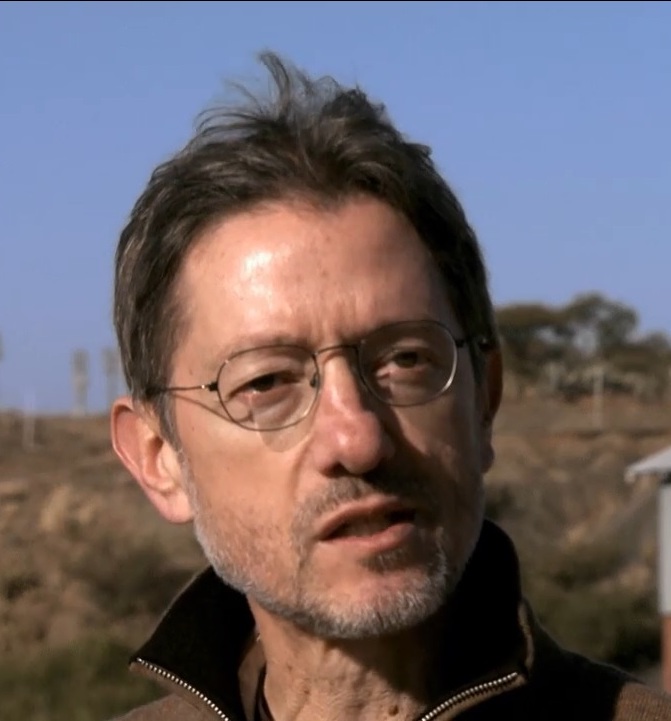
Research
Diamonds are unique in that they isolate inclusions of other minerals from diffusive exchange, even at mantle temperatures on a billion year time scale. This makes them near-perfect time capsules from the early history of continents. My research is focused on determining the isotope systematics of different generations of lithospheric diamonds as a way to trace the evolution of subcontinental mantle that avoids the secondary effects seen in xenoliths. These studies have led to new insights into a global change in tectonic regime and the onset of modern-style plate tectonics between 3.2 and 3.0 billion years ago. Recent work on sublithospheric diamonds is aimed at elucidating the deep recycling of surficial components including boron, carbon and water back into the convecting mantle sampled by oceanic basalts.
Selected publications
Smith EM, Ni P, Shirey SB, Richardson SH, Wang W, Shahar A (2021) Heavy iron in large gem diamonds traces deep subduction of serpentinized ocean floor. Sci Adv 7 (14) eabe9773.
Smith EM, Shirey SB, Richardson SH, Nestola F, Bullock ES, Wang J, Wang W (2019) Reply to: Evidence for two blue (type IIb) diamond populations. Nature 570, E28-29.
Smith EM, Shirey SB, Richardson SH, Nestola F, Bullock ES, Wang J, Wang W (2018) Blue boron-bearing diamonds from Earth’s lower mantle. Nature 560, 84-87.
Smith EM, Shirey SB, Nestola F, Bullock ES, Wang J, Richardson SH, Wang W (2016) Large gem diamonds from metallic liquid in Earth’s deep mantle. Science 354, 1403-1405.
Viljoen KS, Harris JW, Ivanic T, Richardson SH, Gray K (2014) Trace element chemistry of peridotitic garnets in diamonds from the Premier (Cullinan) and Finsch kimberlites, South Africa: contrasting styles of mantle metasomatism. Lithos 208, 1-15.
Harte B, Richardson S (2012) Mineral inclusions in diamonds track the evolution of a Mesozoic subducted slab beneath west Gondwanaland. Gondwana Research 21, 236-245.
Shirey SB, Richardson SH (2011) Start of the Wilson cycle at 3 Ga shown by diamonds from subcontinental mantle. Science 333, 434-436.
Gurney JJ, Helmstaedt HH, Richardson SH, Shirey SB (2010) Diamonds through time. Economic Geology 105, 689-712.
Helmstaedt HH, Gurney JJ, Richardson SH (2010) Cratonic diamond ages and lithosphere evolution – constraints on Precambrian tectonics and diamond exploration. Canadian Mineralogist 48, 1385-1408.
Smit KV, Shirey SB, Richardson SH, le Roex AP, Gurney JJ (2010) Re-Os isotopic composition of peridotitic sulphide inclusions in diamonds from Ellendale, Australia: Age constraints on Kimberley cratonic lithosphere. Geochimica et Cosmochimica Acta 74, 3292-3306.
Richardson SH, Pöml PF, Shirey SB, Harris JW (2009) Age and origin of peridotitic diamonds from Venetia, Limpopo Belt, Kaapvaal-Zimbabwe Craton. Lithos 112, 785-792.
Richardson SH, Shirey SB (2008) Continental mantle signature of Bushveld magmas and coeval diamonds. Nature 453, 910-913.
Westerlund KJ, Shirey SB, Richardson SH, Carlson RW, Gurney JJ, Harris JW (2006) A subduction wedge origin for Paleoarchean peridotitic diamonds and harzburgites from the Panda kimberlite, Slave craton: evidence from Re-Os isotope systematics. Contributions to Mineralogy and Petrology 152, 275-294.
Zartman RE, Richardson SH (2005) Evidence from kimberlitic zircon for a decreasing mantle Th/U since the Archean. Chemical Geology 220, 263-283.
Gurney JJ, Helmstaedt HH, le Roex AP, Nowicki T, Richardson SH, Westerlund KJ (2005) Diamonds: Crustal distribution and formation processes in time and space and an integrated deposit model. Economic Geology 100, 143-177.
Richardson SH, Shirey SB, Harris JW (2004) Episodic diamond genesis at Jwaneng, Botswana, and implications for Kaapvaal craton evolution. Lithos 77, 143-154.
Shirey SB, Richardson SH, Harris JW (2004) Integrated models of diamond formation and craton evolution. Lithos 77, 923-944.
de Wit MJ, Richardson SH, Ashwal LD (2004) Kaapvaal Craton special volume – an introduction. South African Journal of Geology 107, 1-6.
Shirey SB, Richardson SH, Harris JW (2004) Age, paragenesis, and composition of diamonds and evolution of the Precambrian mantle lithosphere of southern Africa. South African Journal of Geology 107, 91-106.
Westerlund KJ, Gurney JJ, Carlson RW, Shirey SB, Hauri EH, Richardson SH (2004) A metasomatic origin for late Archean eclogitic diamonds: implications from internal morphology of diamonds and Re-Os and S isotope characteristics of their sulfide inclusions from the late Jurassic Klipspringer kimberlites. South African Journal of Geology 107, 119-130.
Shirey SB, Harris JW, Richardson SH, Fouch M, James DE, Cartigny P, Deines P, Viljoen F (2003) Regional patterns in the paragenesis and age of inclusions in diamond, diamond composition and the lithospheric seismic structure of southern Africa. Lithos 71, 243-258.
Shirey SB, Harris JW, Richardson SH, Fouch MJ, James D, Cartigny P, Deines P, Viljoen F (2002) Diamond genesis, seismic structure, and evolution of the Kaapvaal-Zimbabwe craton. Science 297, 1683-1686.
Richardson SH, Shirey SB, Harris JW, Carlson RW (2001) Archean subduction recorded by Re-Os isotopes in eclogitic sulfide inclusions in Kimberley diamonds. Earth and Planetary Science Letters 191, 239-248.
Shirey SB, Carlson RW, Richardson SH, Menzies AH, Pearson DG, Harris JW, Carlson RW, Wiechert U, Gurney JJ (2001) Archean emplacement of eclogitic components into the lithospheric mantle during formation of the Kaapvaal Craton. Geophysical Research Letters 28, 2509-2512.
John Compton
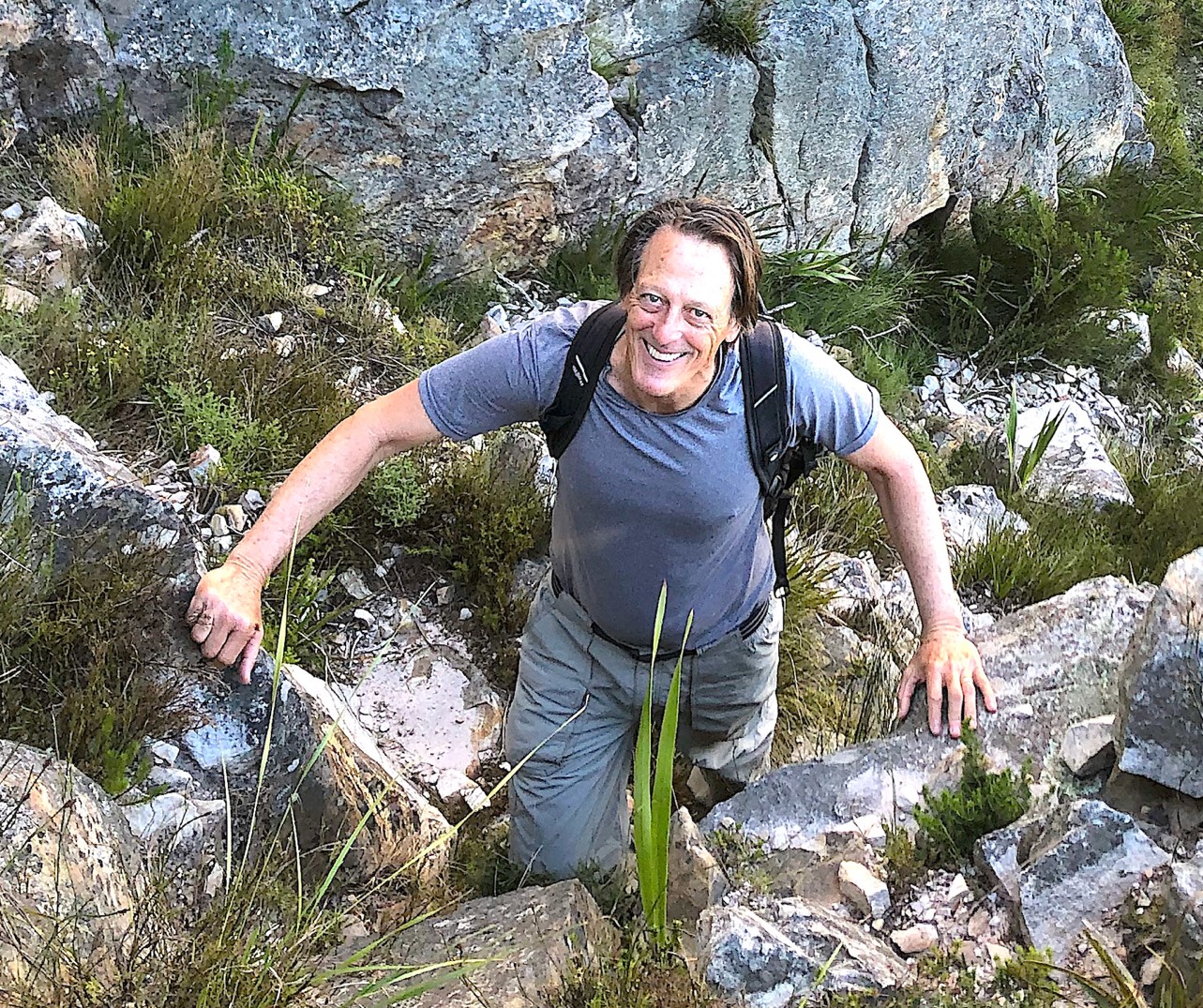
John Compton was born and raised in the San Francisco Bay Area. He received his undergraduate degree in Chemistry/Earth Sciences from the University of California at San Diego (UCSD) in 1981 and his PhD in Earth Sciences from Harvard University in 1986. He taught at the School of Marine Science, University of South Florida, for 10 years before moving to the Department of Geological Sciences, University of Cape Town (UCT), in 1996. At UCT he taught a first-year introductory course on Earth and environmental sciences as well as a course on marine geology and geochemistry. In collaboration with his students and colleagues he has published over 60 papers spanning a wide range of research topics that include the origin of phosphorus-rich deposits of the Benguela Upwelling System; wind-blown dust as a source of nutrients to the highly diverse fynbos plant ecosystem; and topics integrating geology and human evolution (geoarchaeology). In 2016 he established Earthspun Books, publisher of his popular guide The Rocks & Mountains of Cape Town, Human Origins: How diet, climate and landscape shaped us and, most recently, West Coast: A Natural History. He is now emeritus and continues to work on various research projects, as well as publishing natural history books. Visit www.johnscompton.com to learn more about his books and research. You will also find links to YouTube videos, recorded lectures and maps on the geology of the Cape Town area. If you wish to buy any of his books, you can download the order form from his website.
Selected research papers
Bergh, E.W., von Koslowski, R., Compton, J.S., 2020. Variations in deep water masses along the western margin of South Africa, spanning the last two glacial terminations. Palaeogeography, Palaeoclimatology, Palaeoecology 562 https://doi.org/10.1016/j.palaeo.2020.110148
Cawthra, H.C., Jacobs, Z., Compton, J.S., Fisher, E.C., Karkanas, P., Marean, C.W., 2018. Depositional and sea-level history from MIS 6 (Termination II) to MIS3 on the southern continental shelf of South Africa. Quaternary Science Reviews 181, 156-172.
Cooper, J.A.G., Green, A.N, Compton, J.S., 2018. Sea-level change in southern Africa since the Last Glacial Maximum. Quaternary Science Reviews 201, 303-318. https://doi.org/10.1016/j.quascirev.2018.10.013
Compton, J.S., Bergh, E.W., 2016. Phosphorite deposits on the Namibian shelf. Marine Geology 380, 290-314. http://dx.doi.org/10.1016/j.margeo.2016.04.006
Wigley, R. and Compton, J.S., 2012. Microstratigraphy of a Miocene layered phosphatic pebble from the western margin of South Africa. Sedimentology 60, 666-678. doi: 10.1111/j.1365-3091.2012.01355.x
Abanda, P.A., Compton, J.S., Hannigan, R.E., 2011. Soil nutrient content, above-ground biomass and litter in a semi-arid shrubland, South Africa. Geoderma 164, 128-137.
Mauger, C. and Compton, J.S., 2011. Formation of modern dolomite in hypersaline pans of the Western Cape, South Africa. Sedimentology 58, 1678-1692 (DOI: 10.1111/j.1365-3091.2011.01229.x).
Compton, J.S., 2011. Pleistocene sea-level fluctuations and human evolution on the southern coastal plain of South Africa. Quaternary Science Reviews 30, 506-527.
Soderberg, K. and Compton, J.S., 2007. Dust as a nutrient source to the fynbos ecosystem, South Africa. Ecosystems 10, 550-561. DOI: 10.1007/s10021-007-9032-0.
Compton, J.S. and Maake, L. 2007. Source of the suspended load of the upper Orange River, South Africa. South African Journal of Geology 110, 339-348.
Books
Compton, J.S. 2004. The Rocks & Mountains of Cape Town. Double Storey Books (Juta & Co.), Cape Town, South Africa, 112 p. (ISBN 1-919930-70-1) (second impression 2006; third impression 2016 by Earthspun Books).
Compton, J.S. 2016. Human Origins: How Diet, Climate and Landscape Shaped Us. Earthspun Books, Cape Town, South Africa, 384 p. (ISBN 9780620696050).
Compton, J.S. 2021. West Coast: A natural history. Earthspun Books, Cape Town, South Africa, 232 p. (ISBN 9780620904490).
Anton le Roex
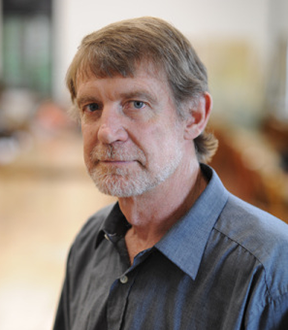
Research
My research interests lie in understanding the geochemical composition and evolution of mafic igneous rocks, their differentiates and their mantle source regions. The role of mantle plumes in the generation of intra-plate magmatism, both within oceanic and continental regions, the origin of their geochemical characteristics and their interaction with surrounding asthenospheric and overlying lithospheric mantle are fundamental foci of my research interests. Primary geographical areas of interest include the Southern Ocean, southern Africa, Madagascar and the mantle underlying Gondwanaland.
Selected Publications
le Roex AP, Chevallier L, Verwoerd WJ and Barends R (2012) Petrology and geochemistry of Marion and Prince Edward Islands, Southern Ocean: magma chamber processes and source region characteristics. J. Volc. Geotherm. Res 223-224, 11-18
O’Connor J, Jokat W, le Roex AP, Class C, Wijbran JR, Keßling S, Kuiper K, Nebel O (2012). Synchronous age progressive hotspot trails on the African Superswell. Nature Geoscience 5, 735-738.
le Roex AP and Class C (2014) Metasomatism of the Pan-African lithospheric mantle beneath the Damara Belt, Namibia, by the Tristan mantle plume: geochemical evidence from mantle xenoliths. Contributions to Mineralogy and Petrology 168:1046
le Roex AP, Class C (2016) Metasomatic enrichment of Proterozoic mantle south of the Kaapvaal craton, South Africa: origin of sinusoidal REE patterns in clinopyroxene and garnet. Contributions to Mineralogy and Petrology, 171:14
Cucciniello C, Melluso L, le Roex AP, Jourdan F, Morra V, de Gennaro R, Grifa C (2017) From olivine nephelinite, basanite and basalt to peralkaline trachyphonolite and comendite in the Ankaratra volcanic complex, Madagascar: 39Ar/40Ar ages, phase compositions and bulk-rock geochemical and isotopic evolution. Lithos 274, 363-382.
Nakashole A, le Roex AP, Reid DL (2020) Geochemistry and petrogenesis of the Tsirub nephelinite intrusions, southern Namibia. J African Earth Sciences 162, 103701
le Roex AP, Tinguely C and Gregoire C (2020) Eclogite and Garnet Pyroxenite Xenoliths from Kimberlites Emplaced Along the Southern Margin of the Kaapvaal Craton, Southern Africa: Mantle or Lower Crustal Fragments? J. Petrology, 1-32, doi: 10.1093/petrology/egaa040
Ramokgaba L, le Roex AP and Robey J. (2021) Phlogopite-rich and phlogopite-poor kimberlite intrusions within the Du Toitspan kimberlite pipe, South Africa: Petrogenetic relationships and localised source heterogeneity. Lithos 390-391; 106125
Dave Reid

Precambrian Geology, Isotope Geology, Igneous Petrology, Economic Geology, Analytical Techniques, Computer Applications
Geologic evolution of the Proterozoic mobile belts in the south-western part of Africa, namely, the Namaqua and Pan-African provinces. Granitoid suites in the Namaqua Province and their associated, particularly porphyry copper-molybdenum and quartz vein hosted tungsten-molybdenum deposits. Ancient metamorphosed volcano-sedimentary exhalative Pb-Zn-Cu sulphide deposits in the Bushmanland Group (Broken Hill, Aggeneys and Gamsberg)
Petrogenesis and metallogeny of Pan-African granitoids and alkaline rocks of southern Namibia. Tertiary carbonatites in southern Namibia
Genesis of PGE mineralisation in the Bushveld Complex, with particular focus on the Northam Platinum Mine
Application of geochemical tracer techniques to problems in Archaeology, with particular focus on glass beads from Iron Age sites in Africa and Asia
Contact Details: david.reid@uct.ac.za
Selected Publications
Smith, D., Basson, I.J. and Reid, D.L., 2004, The normal reef sub-facies of the Merensky Reef at Northam platinum mine, Zwartklip facies, Bushveld Complex, Canadian Mineralogist 42, 243-260.
Reid, D.L., Basson, I.J., 2002, Iron-rich ultramafic pegmatite replacement bodies within the Upper Critical Zone, Rustenburg Layered Suite, Northam Platinum Mine, South Africa, Mineralogical Magazine 66, 895-914.
Saitowitz, S.J. and Reid, D.L., 2001, Early Indian Ocean glass bead trade between Egypt and Malaysia: A pilot study. Bulletin Indo-Pacific Prehistory Association, Vol 5, 119-123. Canberra, Australian National University.
Saitowitz, S.J. and Reid, D.L., 2001, Physical and chemical analysis of glass beads and glassy slag from Iron age sites in northeast Thailand: Preliminary Findings, In: Jones, M. and Sheppard, P. (Editors) Australasian connections and new directions. Proceedings of the 7th Australasian Archaeometry Conference, University of Auckland, 307-327.
Cooper, D.L., Reid, D.L., 2000, The association of potassic trachytes and carbonatites at the Dicker Willem complex, southwest Namibia: Coexisting, immiscible, but not cogenetic magmas. Contrib, Mineral. Petrol. 139, 570-583.
Cooper, D.L., Reid, D.L., 1998, Nepheline-sövites as parental magmas in carbonatite complexes: Evidence from Dicker Willem, southwest Namibia, J. Petrol. 39, 2123-2136.
Reid, D.L., Smith, C.B., Welke, H.J., Moore, J.M., 1997, Lead isotope patterns in Proterozoic stratiform base metal mineralization in the Bushmanland Group, Namaqua Province, South Africa, Econ. Geol. 92 (2), 248-258.
Reid, D.L., 1997, Sm-Nd ages and REE geochemistry of Proterozoic arc-related igneous rocks in the Richtersveld Subprovince, Namaqua Mobile Belt, Southern Africa, J. Afr. Earth Sci 24 (4), 621-633.
Reid, D.L., Rex, D.C., Brandl, G., 1997, Karoo basalts in the Ellisras sub-basin, Northern Province, S. Afr. J. Geol. 100 (2), 151-156.
Cooper, A.F., Paterson. L.A., Reid, D.L., 1995, Lithium in carbonatites: consequence of an enriched mantle source?, Min. Mag. 59, 401-408.
Reid, D.L., Smith, C.B., Watkeys, M.K., H.J. Welke, P.J. Betton, 1997, Whole rock radiometric age patterns in the Aggeneys - Gamsberg ore district, central Bushmanland, South Africa, S. Afr. J. Geol. 100 (1), 11-22.
John Rogers
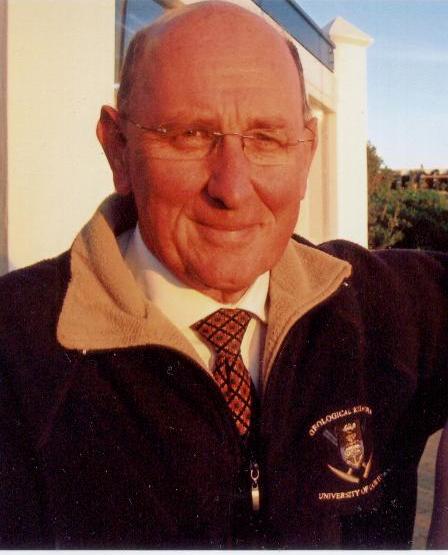
Dr John Rogers was schooled in England, Northern Ireland and the Free State (Kroonstad High School)(matriculated in 1961) before undergoing voluntary navy training at Gordon's Bay, Simon's Town and Saldanha Bay in the South African Navy in 1962. This must have sown a desire for a life on the ocean wave because, after obtaining his BSc Honours degree in Geology at the University of Cape Town in 1966, he became a founding member of UCT's Marine Geoscience Unit and mapped the seafloor between Cape Point and Knysna across the Agulhas Bank for his MSc (1971) from UCT, following this up with a PhD on the seafloor off Namaqualand and southern Namibia in 1977, also from UCT. He then joined the Geological Survey, now the Council for Geoscience, On leaving the Geological Survey in 1982, he then rejoined UCT as a Senior Research Officer to participate in marine-geological research in the deep-ocean basins around southern Africa.
His teaching commitments ranged from lecturing second-, third- and fourth-year geology students in the field of sedimentology, fourth-year students in marine geology and teaching first-year concepts of geology to third-year civil-engineering students. He also led an annual, 9-day, field-geology training camp for second-year students in the southern Karoo near Laingsburg as part of a fieldwork course.
Moving into the field of popular geology, he co-authored, in 2014, a booklet on the geology of the Tankwa Karoo National Park with Mr George Smith, a prominent geophysicist and Honorary Ranger of SANParks, now also retired from the department.
Following the 35th International Geological Congress, held in Cape Town in 2016, he authored, in 2017, a field guide to the geology of Robben Island, which is used during annual overnight trips that he leads for The Friends of the South African Museum.
His comprehensive roadside-geology book on the Cape Peninsula and its hinterland, was published by the Council for Geoscience in 2018, obtainable from the author and the publishers. In addition, he is the current Secretary of the GeoHeritage Subcommittee of the Western Cape Branch of the Geological Society of South Africa.
Contact Details: johnrogers1944@gmail.com
Selected Publications
Rogers, J. 2018. Geological Adventures in the Fairest Cape: Unlocking the Secrets of its Scenery. Popular Geoscience Series of Council for Geoscience (South Africa), Pretoria, 7: 1-320.
Rogers, J. 2017. Geological Walking Tour of Robben Island. Field Trip Guide ODPRE05 35th International Geological Congress Cape Town 2016, 16 pp.
Rogers, J. and Smith, G.C. 2014. Around the Tankwa Karoo National Park: A Field Guide to the Geology and Landscape. South African National Parks Honorary Rangers (Boland) Region) and Geoheritage Subcommittee of the Western Cape Branch of the Geological Society of South Africa, 26 pp.
Rau, A., Rogers, J. and Chen, M.T., 2006, Late Quaternary palaeoceanographic record in giant piston cores off South Africa, possibly including evidence of neotectonism, Quaternary International 148, 65-77.
Rogers, J. and Rau, A.J., 2006, Surficial sediments of the wave-dominated Orange River Delta and the adjacent continental margin off south-western Africa, African Journal of Marine Science 28, 511-524.
Rogers, J., 2006, Sedimentology of Late Cenozoic sediments of the Varswater Formation in the Varswater Quarry at Langebaanweg, Western Cape Province, South Africa, African Natural History 2 (November), 192-193.
Rogers, J., 2006, Sedimentology of Late Cenozoic sediments, including the Pliocene Duynefontyn Member of the Varswater Formation, Koeberg Nuclear Power Station, Melkbosstrand, Cape Town, African Natural History 2 (November), 194-196.
Rau, A.J., Rogers, J., Lutjeharms, J.R.E., Giraudeau, J., Chen, M.T., Waelbroeck, C. and Lee-Thorp, J.A., 2002, A 450 kyr record of surface water conditions on the Agulhas Bank Slope, south of Africa, Marine Geology 180, 183-201.
Rogers, J. and Li, X.C., 2002, Environmental impact of diamond mining on continental shelf sediments off southern Namibia, Quaternary International 92, 101-112.
Meadows, M.E., Rogers, J., Lee-Thorp, J.A., Bateman, M.D. and Dingle, R.V., 2002, Holocene chronology of a continental shelf mudbelt off southwestern Africa, The Holocene 12, 59-67.
Shaw, A.I., Holmes, P.J. and Rogers, J., 2001, Late Quaternary environmental change in the headward vicinity of Dias Beach, Cape Point, South Africa, South African Journal of Geology 104, 101-114.
Gray, C.E.D., Meadows, M.E., Lee-Thorp, J.A. and Rogers, J., 2000, Characterising the Namaqualand mudbelt of southern Africa: Chronology, palynology and palaeoenvironents, South African Geographical Journal 82, 137-142.
Rogers, J., 2000, Geotourism in the Western Cape: Of plinths and plaques, Journal of African Earth Sciences 31, 63-64.
Rogers, J., Rau, A.J. and Chen, M.T., 2000, Evidence of latitudinal fluctuations in the South Atlantic during the late Quaternary from ice-rafting detritus off the west coast of South Africa, Journal of African Earth Sciences 31, 62-63.
Andy Duncan
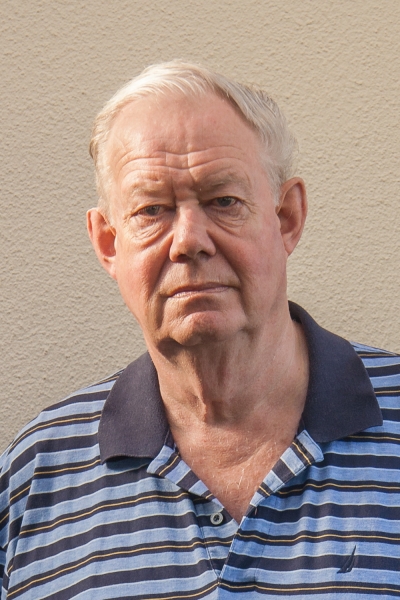
Andy Duncan is a BSc (Hons) graduate of the University of Cape Town who obtained his PhD from Victoria University of Wellington in New Zealand and then spent 2½ years as a postdoctoral research f fellow at the Center for Volcanology in the University of Oregon (USA). He started a ten year period as a NASA co-investigator on the Lunar Science Program during his time in Oregon and continued this when he returned to UCT in 1972. His research focus for much of his career has been on volcanic rocks with particular interest in the geological, volcanological, geochemical and petrogenetic aspects of the Karoo and Etendeka flood volcanic provinces in Southern Africa. In pursuing his interest in the geochemistry of volcanic rocks he became a practitioner in the application of a number of analytical techniques, particularly X-Ray Fluorescence Spectrometry (XRF), in obtaining high precision trace element analyses. As a spin-off from this engagement with sophisticated XRF techniques he presented a continuously evolving course on the “Theory and Practice of Modern XRF Spectrometry”, in partnership with Professor James Willis, for 30 years at UCT and over a 14-year period at the University of Western Ontario in Canada. He developed computerised techniques for obtaining instrumental analytical data, for establishing geochemical correlation techniques between volcanic rock units using multivariate statistics, and for the simulation modelling of igneous petrogenetic processes. During the period 1995 - 2008 he was the project manager for several major high-profile and high-budget projects at UCT and finished his career at UCT as the Project Manager in the Office of the Vice-Chancellor. He also returned to his roots as an Earth Scientist in the role of Interim Chief Executive Officer of the Africa Earth Observatory Network (AEON) from 2005 - 2008. He “retired” at the end of 2008 but has continued as a part-time project and programme manager for various projects in the Properties & Services and ICT Services Departments.
Contact Details: andy.duncan@uct.ac.za
Selected Publications
Professor Duncan has co-authored two books with Professor James Willis (See Profesor Willis' bio below) and a few of his notable publications are listed here:
Duncan, A. R., & Marsh, J. S. (2006). The Karoo Igneous Province. In M. R. Johnson, C. R. Anhaeusser & R. J. Thomas (Eds.), The Geology of South Africa (pp. 501-520). Johannesburg and Pretoria: The Geological Society of South Africa and the Council for Geoscience.
Ewart, A., Marsh, J. S., Milner, S. C., Duncan, A. R., Kamber, B. S., & Armstrong, R. A. (2004). Petrology and geochemistry of early cretaceous bimodal continental flood volcanism of the NW Etendeka, Namibia. Part 1: Introduction, mafic lavas and re-evaluation of mantle source components. Journal of Petrology, 45(1), 59-105.
Ewart, A., Marsh, J. S., Milner, S. C., Duncan, A. R., Kamber, B. S., & Armstrong, R. A. (2004). Petrology and geochemistry of early cretaceous bimodal continental flood volcanism of the NW Etendeka, Namibia. Part 2: Characteristics and petrogenesis of the high-Ti latite and high-Ti and low-Ti voluminous quartz latite eruptives. Journal of Petrology, 45(1), 107-138.
Marsh, J. S., Ewart, A., Milner, S. C., Duncan, A. R., & Miller, R. M. (2001). The Etendeka Igneous Province: magma types and their stratigraphic distribution with implications for the evolution of the Parana-Etendeka flood basalt province. Bulletin of Volcanology, 62(6-7), 464-486.
Duncan, A. R., Erlank, A. J., & Marsh, J. S. (1984). Regional geochemistry of the Karoo Igneous Province. In A. J. Erlank (Ed.), Petrogenesis of the Volcanic Rocks of the Karoo Province (Vol. Special Publication No 13, pp. 355-388). Johannesburg: Geological Society of South Africa.
Erlank, A. J., Allsopp, H. L., Duncan, A. R., & Bristow, J. W. (1980). Mantle heterogeneity beneath Southern Africa: evidence from the volcanic record. Philosophical Transactions of the Royal Society of London, A297, 295-307.
Duncan, A. R., McKay, S. M., Stoeser, J. W., Lindstrom, M. M., Lindstrom, D. J., Fruchter, J. S., & Goles, G. G. (1975). Lunar polymict breccia 14321: a compositional study of its principal components. Geochimica et Cosmochimica Acta, 39, 247-260.
James Willis

James Willis worked in the Departments of Geochemistry and Geological Sciences at the University of Cape Town from 1961 to 2000, during which period he gained his Masters (with distinction) and Doctoral degrees. He was initially employed as a research assistant rising through the ranks to Associate Professor in 1981. On his retirement from UCT in 2000 he was appointed professor emeritus in the Department of Geological Sciences. He was a NASA co-investigator for lunar sample studies in the late 1960s and early 1970s, a visiting scientist at the Max Planck Institüt für Chemie (Abteilung Kosmochemie), Mainz in 1982, a member of the central committee of the South African Spectroscopic Society from 1974-1999 and its president from 1986 to 1999. He was also a council member of the South African Coal Ash Association from 1987-1993. He was the recipient of the S.A. Spectroscopic Society’s ARLABS Gold Medal (1986), a Geological Society of South Africa Honours Award (1992), and the Denver X-ray Conference Birks Award (1994). He has taught courses on instrumental analytical techniques, sedimentary geochemistry, environmental geochemistry and the theory and practical aspects of geodata analysis (statistics). He initiated and co-directed a highly successful taught one-year Masters degree course in Environmental Geochemistry (six months lectures, five months dissertation) (1994-2000). Since 1974 he has directed at UCT an annual intensive two-week course on the theory and practice of XRF Spectrometry for university staff and mining and manufacturing industries. The course was also given at the Department of Geology, University of Western Ontario, London, Ontario from 1991-2005. Over the years he gained experience in many analytical techniques, including DC arc optical emission spectrometry, atomic absorption spectrophotometry, electron microprobe analysis, SEM-EDX, instrumental neutron activation analysis, ICP-AES, ICP-MS, HPIC, particle size analysis, X-ray diffraction and XRFS. He has a very broad experience in many different fields of geochemistry, including sedimentary and environmental geochemistry, meteorites, marine geochemistry, sediments, sedimentary rocks, coals and fly ash. He describes himself as a geochemist with a strong interest in the development, promotion and application of spectroscopic analytical techniques.
Contact Details:
Professor Willis has published three books and is currently working on a fourth:
Willis, J.P., Feather, C.E. and Turner, K., 2014, Guidelines for setting up XRF Applications, 480pp. In preparation. Due for publication in September by the authors.
Willis, J.P., Turner, K. and Pritchard, G., 2011, XRF in the Workplace, 280pp. Published by PANalytical, Australia.
Willis, J.P., 2010, XRF Sample Preparation: Glass beads by borate fusion, 58pp. Published by PANalytical B.V.,The Netherlands.
Willis, J.P. and Duncan, A.R., 2008, Understanding XRF Spectrometry, Vols 1 and 2, 628pp. Published by PANalytical B.V.,The Netherlands.